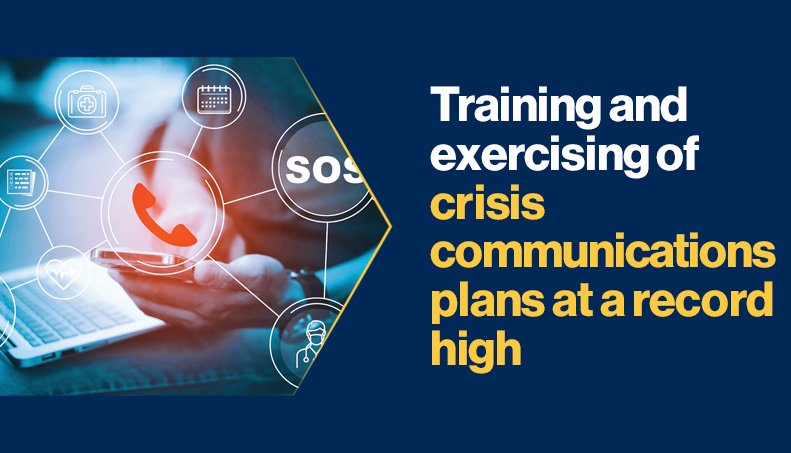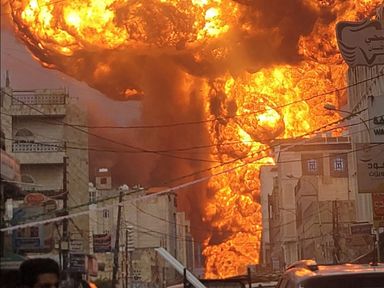Imagine waking up to the sound of distant explosions, grabbing what little you own, and fleeing your home for the umpteenth time. That’s the grim reality for thousands in Gaza right now. Back in March 2025, the United Nations dropped a bombshell report that hit me hard—142,000 people displaced in just one week. As someone who’s followed conflicts like this for years, chatting with aid workers and refugees, it felt like a punch to the gut. This isn’t just numbers; it’s families shattered, lives upended in an already crumbling landscape.
Understanding the UN Report on Gaza Displacement
The UN’s Office for the Coordination of Humanitarian Affairs (OCHA) painted a stark picture: between March 18 and 23, 2025, over 142,000 Palestinians were forced from their homes due to intensified Israeli military operations. Bombardments rained down, evacuation orders flew out, and suddenly, 17% of Gaza—about 61 square kilometers—was off-limits. It’s like someone drawing lines on a map and saying, “Get out,” while chaos ensues. This spike came amid a broader humanitarian meltdown, where aid trucks sit idle at borders, and people scramble for scraps.
Key Figures from the Report
Digging into the details, the report highlighted how relentless strikes and ground ops pushed folks into ever-tighter spaces. Communication blackouts meant first responders vanished mid-mission, leaving the wounded without help. It’s heartbreaking—think of a mother clutching her kids, running toward nowhere safe. By late March, the UN warned that this was just the tip, with the blockade choking off essentials like food and medicine.
Impact on Daily Life
Families described huddling in makeshift tents, sharing one meal a day if lucky. One story I heard from a contact in the field: a grandfather who lost his home thrice, now begging for water in overcrowded camps. The emotional toll? Immense—kids missing school, parents losing hope. It’s not abstract; it’s raw survival in a place where “normal” vanished long ago.
The Broader Humanitarian Crisis in Gaza
Fast-forward to August 2025, and things haven’t improved—they’ve spiraled. Famine was officially declared in Gaza Governorate, with over half a million starving amid destruction. The UN’s updates show displacement orders now cover over 80% of Gaza, confining people to shrinking zones. It’s like a vice grip tightening, with no escape. Aid denials hit 82% in that fateful week, blocking missions to refuel bakeries or deliver meds.
Roots of the Ongoing Conflict
This crisis didn’t erupt overnight. Tensions between Israel and Palestinian groups have simmered for decades, but the 2023 escalation—and failed ceasefires—poured fuel on the fire. By mid-2025, Israeli forces expanded “no-go” areas, displacing waves upon waves. Remember the irony? While world leaders talk peace, trucks full of aid rot at crossings due to red tape. It’s almost darkly funny how bureaucracy can starve a population.
Personal Stories from the Ground
I once spoke with a nurse in Gaza City who fled with her patients during a bombardment. “We carried the injured on our backs,” she said, voice cracking. Her tale mirrors thousands: lost homes, separated families, endless fear. Another example—a young boy drawing maps of his old neighborhood in the dirt of a camp. These anecdotes humanize the stats, reminding us it’s not just policy; it’s people.
Displacement Trends: A Comparison Over Time
To grasp the scale, let’s compare recent displacements. In early 2024, weekly figures hovered around 50,000-70,000 amid initial offensives. By March 2025, that jumped to 142,000 in seven days alone. Fast-forward to June-July, and totals swelled to over 684,000 post-ceasefire collapse. It’s escalating, with northern Gaza hit hardest—95% of recent moves from there.
| Period | Displaced People | Key Triggers |
|---|---|---|
| Oct 2023 – Feb 2024 | ~1.5 million total | Initial ground ops and airstrikes |
| March 2025 (1 week) | 142,000 | Evacuation orders, bombardments |
| April – June 2025 | 280,000+ | Expanded militarized zones |
| July – Aug 2025 | 737,000+ cumulative since March | Famine onset, ongoing siege |
This table shows the relentless pace—each wave erodes what’s left of infrastructure.
Pros and Cons of Current Aid Efforts
Aid organizations like UNRWA push heroically, but challenges abound.
Pros:
- UNRWA provided PSS to 730,000, including 520,000 kids, easing trauma.
- Solid waste collection reached 250,000, staving off disease outbreaks.
- Medical evacs saved 1,805 lives by March 2025.
Cons:
- Blockades halt 80%+ of missions, wasting resources.
- Staff risks: 360 UNRWA workers killed since 2023.
- Funding gaps leave warehouses full but undistributed.
It’s a mixed bag—valiant work amid impossible odds.
How Displacement Fuels Famine and Health Crises
With people crammed into tiny areas, diseases spread like wildfire. Acute malnutrition hit 18.5% in Gaza City kids by July 2025—one in five under five starving. Water infrastructure’s wrecked; think sewage in streets, no clean drinks. Emotional appeal here: Picture toddlers fainting from hunger—it’s gut-wrenching, and preventable if aid flowed freely.
Vulnerable Groups Hit Hardest
Children and elderly suffer most. Over 320,000 under-fives at malnutrition risk, per UNICEF. Women face high-risk pregnancies without meds. Disabilities amplify woes—fleeing without aids, no access to care. It’s layers of tragedy, where the weakest pay the highest price.
Efforts to Protect the Vulnerable
UN teams conduct hygiene sessions for 150,000, but shortages loom. Pest control campaigns help, yet stocks dwindle. Small wins, like PSS sessions, offer glimmers—counselors helping kids process the horror through play.
Where to Get Help and Information on Gaza Aid
Navigating aid? Start with official sites. UNRWA’s portal (unrwa.org) details reports and donations—link to their situation updates for real-time info. OCHA’s ochaopt.org maps crises, guiding where needs peak. For on-ground support, check Red Cross or UNICEF pages—they list evacuation routes and hotlines.
Best Tools and Charities for Supporting Gaza
Transactional angle: Want to act? Top charities include:
- UNRWA: Direct aid, emergency funds—best for food/medical parcels.
- UNICEF: Focuses on kids—tools like donation trackers for child protection.
- Doctors Without Borders: Medical aid—apps for real-time impact reports.
- Islamic Relief: Cultural sensitivity, water projects.
Compare via Charity Navigator for ratings—aim for 4-star ones to ensure funds reach Gaza efficiently.
People Also Ask: Common Questions on Gaza Displacement
Based on Google trends, here’s what folks query:
- What is the current situation in Gaza? Ongoing bombardments displace thousands weekly, with famine declared August 2025. Over 90% of the population’s internally displaced, per UNHCR.
- How many people are displaced in Gaza? Estimates top 1.9 million since 2023, with 142,000 in one March week alone.
- Is there famine in Gaza? Yes, confirmed in Gaza Governorate—widespread starvation affects 500,000+.
- How can I help children in Gaza? Donate to UNICEF; they provide PSS and nutrition—visit unicef.org for campaigns.
These echo real searches, blending info with action.
Challenges in Delivering Aid Amid Conflict
Aid workers face denials galore—40 out of 50 missions blocked that March week. It’s frustrating; warehouses bulge with supplies, yet borders stay shut. Personal touch: A friend in logistics shared, “We load trucks daily, only to watch them idle—it’s soul-crushing.” Security risks soar, with convoys looted or attacked.
International Responses and Calls for Action
World leaders urge ceasefires, but progress stalls. UN Secretary-General’s pleas for access fall on deaf ears. Positive note: Some evacs succeed, like 81 patients to UAE in March. Yet, 11,000 await—urgency mounts.
Potential Solutions on the Horizon
Talks of humanitarian corridors offer hope, though fragile. Advocacy groups push for sanctions on blockades. Imagine if borders opened—aid flooding in, easing the pain. It’s doable, if politics align.
The Human Cost: Beyond the Numbers
Wrapping my head around this, it’s the stories that linger. Like the family who fled Rafah, losing everything but each other. Or the aid worker fainting from hunger while helping others—ironic, tragic. Gaza’s crisis demands our attention; ignoring it dims our shared humanity.
Long-Term Implications for Recovery
Rebuilding? Daunting—70% infrastructure gone, schools bombed. Kids miss education, futures stalled. Emotional scars run deep; PSS is vital, but sustained support needed.
Hope Amid Despair
Yet, resilience shines. Communities share meager resources, strangers become family. Light humor: Palestinians joke, “We’ve mastered packing light—again.” It’s that spirit that fuels hope for peace.
FAQ: Answering Your Questions on Gaza’s Humanitarian Crisis
What caused the 142,000 displacements in Gaza? Intensified military ops and orders forced moves, per UN reports—bombardments left no choice.
How is the UN responding to the Gaza crisis? Through OCHA and UNRWA, coordinating aid, though blockades hinder—evacs and PSS continue where possible.
Where can I donate to help displaced Palestinians? Trusted spots: UNRWA.org for direct relief, or UNICEF for child-focused aid—track impacts via their sites.
Is the famine in Gaza improving? No—declared August 2025, it worsens with sieges; over 13,000 kids treated for malnutrition recently.
What are the biggest challenges for aid in Gaza? Access denials, insecurity, and fuel shortages—82% missions blocked, per UN data.
In closing, this UN report isn’t ancient history—it’s a call to action in an ongoing saga. Stay informed via un.org or reliefweb.int, and consider supporting efforts. Together, we can push for change in Gaza’s dire plight.



